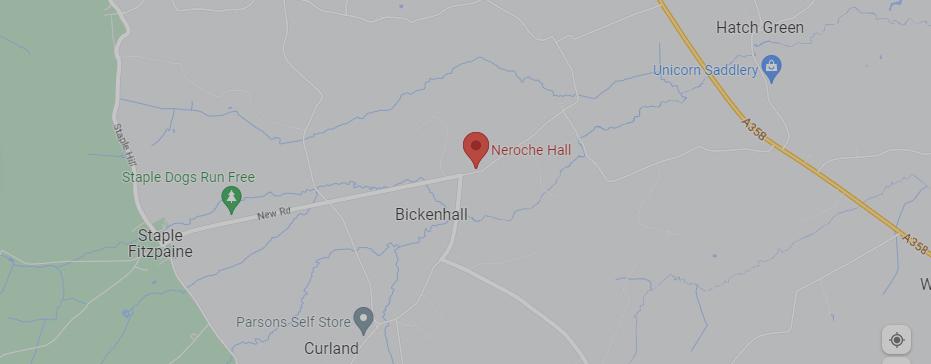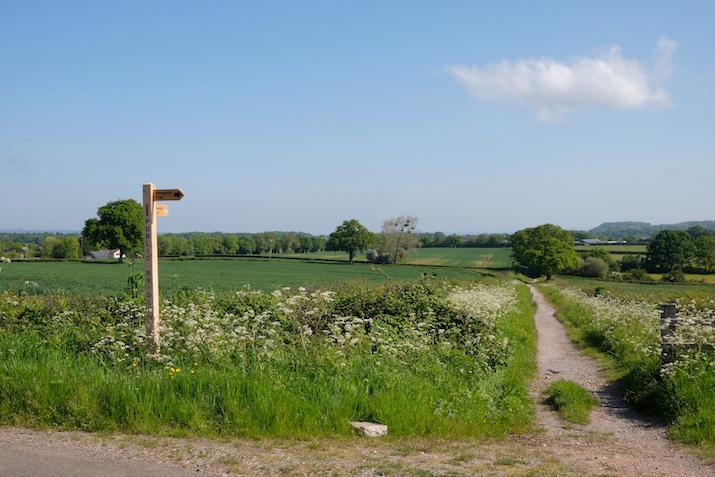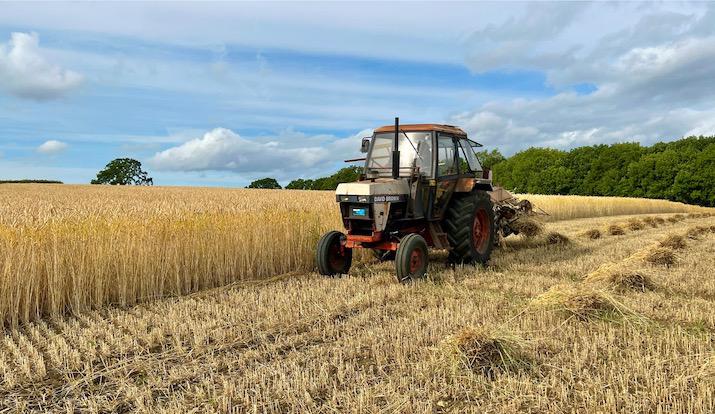A History of Neroche Parish
The name Neroche is thought to be derived from the Old English nierra and rechich or rachich, meaning the ‘camp where hunting dogs were kept’. Three of our villages are mentioned in the Domesday Book in 1086. Torlaberie (Thurlbear), Staple/Estapla (Staple Fitzpaine) and Bichenhalle (Bickenhall), all of which were held by Robert, the Count of Mortain, half brother of William the Conqueror. He built Castle Neroche, a motte and bailey castle, in Curland on the Blackdown Hills escarpment overlooking our villages.
There is evidence of Iron Age occupation in the parish with hill forts at Orchard Hill and Castle Neroche. It is likely Orchard Hill was built sometime from 400BC onwards and was probably abandoned for the site at Castle Neroche, three miles to the south.
At Castle Neroche, a recent survey by English Heritage suggests three main periods of occupation: late Iron Age; the post Norman conquest period; and the time known as ‘The Anarchy’ period, between 1238 to 1248.
During medieval times the parish had a settlement at Playstreet (opposite Neroche Hall), which was revealed through aerial photography in 1977. This settlement was likely to have been established in the period immediately following the Norman conquest (11th century) on the edge of the Neroche Forest. It was during this period that the motte and bailey at Castle Neroche was under construction. Following the dissolution of the monasteries, Playstreet fell into several different private hands; by 1602 it was owned by a member of the Portman family.
In later medieval times the Portmans, through the marriage of William Portman to Christina de Orchard in 1450, became one of Somerset’s leading families. Over the course of the next few centuries they came to own much of the land and property in Neroche (not to mention three hundred acres in central London) and were influential in supporting the movement for agricultural improvement in the 19th century. Many of the cottages within the parish bearing the familiar stone facing and brick window surround were built during this period.
In Victorian times the majority of people in the parish would probably have been tenants who worked on the land. The activities of wives, sons and daughters were vital to the upkeep of the family.
The 1851 census shows that there were a total 13 paupers in the villages of Staple Fitzpaine, Curland and Bickenhall. At the beginning of the 20th century, Staple Fitzpaine had 2 ploughboys, one cowboy and one farm boy all aged 13. Most of the Portman estate passed into Crown ownership in the 1940’s. The farms were leased to tenant farmers and other houses to families. As farming practice changed over the years, the number of farm units dropped and the remaining farms consolidated into larger farms, mostly a mixture of arable, cattle, dairy and sheep. Over the last few years the Crown Estate has been closing tenancies, initially of houses and now of farms. Many long term residents have had to leave to be replaced by home owners. Much of the farm land has passed into owners outside the parish. The Forestry Commission leased the forest areas from the Crown Estate from 1947 until 2017 after which ownership was transferred into its hands.
Life in the Lees of the Blackdowns
The Neroche Local History Group has published a book on the history of three of our parishes entitled "Village Life in the Lee of the Blackdowns - Chronicles of Bickenhall, Curland and Staple Fitzpaine". The book vividly evokes the world of the parishes, tracing them from prehistory to the present day and describing how human toil and aspiration have shaped them over many centuries.
Through careful fieldwork and documentary research it reveals the houses that have been lost from the landscape and records surviving landmarks such as Staple Almshouses and the former church and chapel at Curland. It also tells of lives, often defined by poverty, that were lived in the villages and of the rural trades and industries that provided work.
Not least it draws on the lives of those still living to describe the more recent story of the local countryside, where 19 farms in the 1960s have been reduced by amalgamation to only four.
If you would like to purchase a copy of the book please contact the Neroche Local History Group. Contact details can be found on the Activities page.



